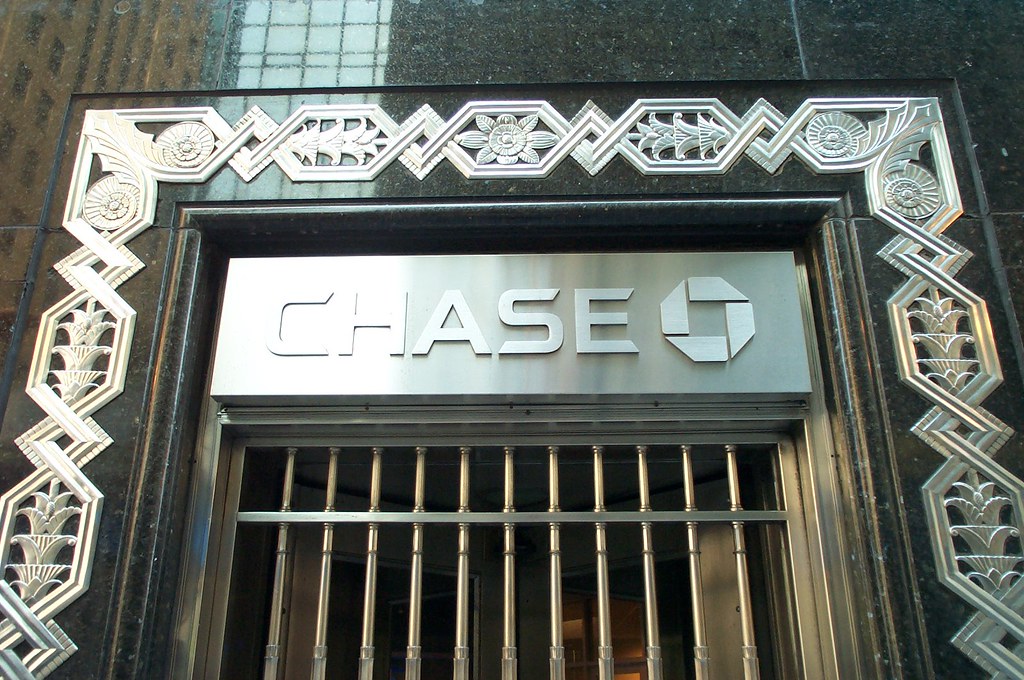
Holiday Closure Truth: The One-Day Pause of 4,700 Branches
Okay, let’s talk about those headlines popping up everywhere, the ones about Chase Bank shutting down thousands of locations. They sound pretty dramatic, right? You see phrases like “Chase Bank closing 4,700 branches” and maybe your mind jumps to worst-case scenarios – like your money suddenly disappearing or the entire financial system hitting the pause button. But take a deep breath! The situation, while involving closures, isn’t quite the financial cliffhanger it might seem. It’s a mix of temporary pauses you’ll want to plan for and a longer-term shift in how we bank.
Sometimes, these headlines are simply referring to something entirely routine: federal holidays! Yes, that’s right. Chase, along with most other major banking institutions across the U.S. like Wells Fargo, Bank of America, and Citibank, follows the standard federal holiday calendar set by the Federal Reserve Bank. This means that on certain national holidays, their physical branches close their doors for the day. It’s a temporary measure, a brief pause, not a permanent vanishing act.
We’ve already seen this happen, and it’s coming up again! For example, Chase announced closures for Memorial Day. All 4,700 Chase branches nationwide were scheduled to close on Monday, May 26, 2025, for this observance. It’s the same story for days like Labor Day or Presidents Day. If you were planning to pop into a branch for some in-person service, like talking to a banker or handling specific paperwork, that wouldn’t be possible on the holiday itself.

Presidents Day, for instance, observed on the third Monday of February, leads to widespread bank closures. This holiday honors those who have held the nation’s highest office, rooted in George Washington’s birthday (February 22) but evolving into a broader commemoration. The Uniform Monday Holiday Act in 1971 shifted it to the third Monday to create convenient long weekends. For banks like Chase, this means a 24-hour halt to in-person services at all their locations.
Similarly, Juneteenth, celebrated on June 19, is another federal holiday that triggers these temporary shutdowns. This significant day marks when enslaved African Americans in Galveston, Texas, finally learned they were free, two years after the Emancipation Proclamation. While only becoming a federal holiday in 2021, it’s quickly becoming a date where many services, including banks like Chase and Wells Fargo, will shutter operations nationwide for the day. This year, when it falls on a Wednesday, there isn’t even a weekend buffer!
The key thing to remember during these temporary holiday closures is that while the physical branches are closed, your access to your money and many services isn’t entirely cut off. Far from it! Chase’s digital banking platform remains fully functional. You can still access online banking systems and use the mobile app to check balances, pay bills, transfer funds between accounts, and even make mobile deposits. Need cash? The ATMs will still be working too! The main limitation is simply the inability to conduct business face-to-face with a teller or banker inside a branch.
Read more about: Nordstrom Dresses on Sale: Universally Flattering Styles for Every Body

It’s not just banks taking a break on these federal holidays, either. The context highlights a wider pause across various sectors. Most government offices, including critical services like Social Security offices and the DMV, will also close down for the day. Even mail services are affected. USPS will partially freeze, meaning no counter services are available, although mail and packages will still be delivered. The stock market also suspends its operations.
However, some services do remain open to help keep things moving. The context mentions that FedEx and UPS offices typically remain open on holidays like Juneteenth, operating pickup and delivery services as normal. For those needing to ship something or access physical services beyond mail, FedEx offers full FedEx delivery, FedEx Freight, and FedEx Office operations, including in-person help at FedEx Office locations, providing a valuable alternative when USPS counter services are unavailable. Even with these options, it’s clear that planning ahead for federal holidays affecting banks and government services is a smart move to avoid last-minute scrambles or getting caught in a standstill.
While temporary holiday closures explain some headlines, there’s another layer to the story: the ongoing trend of permanent physical branch closures across the banking industry. This isn’t about a single day off; it’s a significant shift reflecting how people are banking today. The nation’s largest banks, including Wells Fargo, Bank of America, Flagstar Bank, JPMorgan Chase, U.S. Bank, PNC Bank, TD Bank, Capital One, and Truist, are indeed closing more brick-and-mortar branches permanently.
This trend isn’t new, having started during the Great Recession, but it accelerated significantly because of the COVID-19 pandemic. With more customers turning to mobile apps and online platforms for routine transactions, banks are reevaluating the cost and necessity of maintaining extensive physical networks. The context explicitly states that since 2020, the rate of bank branch closures in the U.S. has actually doubled. Large and very large banks account for the majority of these shutdowns, contributing to an overall 5.6% decline in total bank branches nationwide since the start of the pandemic.
Read more about: Thinking of Moving? Here’s What I Learned About the Trade-offs (Based on Real Info, No Sunshine and Rainbows Here!)

Permanent Closures Trend: Pandemic-Accelerated Digital Shift
Specific numbers reflect this ongoing change. According to information reported to the Office of the Comptroller of the Currency, several major banks have announced specific numbers of locations they plan to close. For example, in 2025 alone, Bank of America is closing 27 locations, JPMorgan Chase (which includes Chase) is closing 15 locations, Flagstar is closing a substantial 52 locations, TD Bank is closing 37, U.S. Bank is closing 40, and Wells Fargo is closing 49. These are permanent changes to the banking landscape.
So, why the push towards fewer physical branches? The primary drivers mentioned are decreased foot traffic in branches, particularly since the pandemic began, and the rapid development and expansion of mobile and online banking capabilities. Today’s digital platforms allow customers to do so much remotely – check balances, pay bills, transfer funds, make deposits, and manage accounts – that daily visits to a branch for simple transactions are much less common than they used to be. Banks are looking to save money by reducing their physical footprint as customer behavior shifts.
However, it’s really important to acknowledge that bank branches are still necessary for many people and many situations. The context points out that not everyone is comfortable or able to rely solely on digital banking. There are still plenty of individuals who need or prefer to travel to a physical bank branch for their banking needs. In-person customer service remains absolutely essential for certain types of transactions or complex issues that are harder to resolve digitally. People still rely on branches or ATMs for direct access to cash, too.
Regional Impact & Solutions: Banking Deserts vs. Mobile Services
This wave of permanent closures does have significant impacts. One major concern highlighted is the potential for an increase in “banking deserts.” These are communities that end up with limited or no access to traditional banking services because local branches close down. The context notes that between 2019 and 2023, several states, particularly in the Mid-Atlantic and New England regions – including Delaware, Pennsylvania, New Jersey, and Vermont – saw some of the largest increases in these underserved areas. This raises important questions about financial inclusion and ensuring everyone has convenient access to banking services.
Banks are trying to address the gaps left by closing branches and maintain some level of in-person access. The context mentions alternative service models being explored. Some banks have introduced mobile branch buses, which are fully equipped, traveling banks that rotate between different locations to provide in-person services in areas that might have lost their local branch. Others are leveraging technology in different ways, deploying video teller ATMs that allow customers to connect with a live teller via video chat in real time, offering a more personal touch than a standard ATM while still being a self-service machine.
Looking ahead, it seems clear that digital banking will continue to grow and likely become the primary way many people handle their day-to-day finances. The capabilities of online and mobile platforms are constantly increasing, making them incredibly convenient for routine tasks. However, the physical bank branch isn’t destined to disappear entirely. Its role is simply evolving, shifting towards being a resource for more complex needs, personalized consultations, and customer support that requires a human touch, rather than a place for simple deposits or withdrawals that can easily be done via app or ATM.

The bottom line is that while headlines about bank closures might sound alarming, the reality is more nuanced. Temporary closures for federal holidays are standard practice, easily navigated by using digital services and ATMs or planning ahead. The ongoing trend of permanent branch reductions reflects changing customer behavior and technological advancements, leading banks to streamline their physical presence. While this presents challenges like potential banking deserts, it also drives innovation in service delivery. You’re not losing access to your money; you’re seeing the banking world adapt. So, stay informed, utilize the digital tools available, and remember to handle crucial in-person needs before those planned holiday shutdowns. Your money is safe; banking is just changing its address!
Related posts:
Chase Shuts Down All Banks for Juneteenth
These 8 Bank of America Branches Are Closing in 2025 (Is Yours One?)
Goodbye Chase Bank – closing its 4,700 branches on Monday, May 26 – here’s the real reason why



